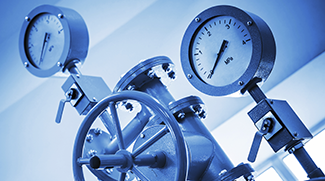The latest updates to the American Society of Mechanical Engineers (ASME) Boiler and Pressure Vessel Code will replace outdated methods and enable the production of more economic pressure vessel designs.
Pressure vessels play a vital role in modern industry and infrastructure, by serving as containers for gases or liquids that need to be held at pressures differing significantly from those of the general atmosphere.
Because of the dangers created by this difference in pressure, codes and standards are needed to ensure that pressure vessels do not pose a threat to human safety during usage.
According to Kamran Mokhtarian, Consulting Engineer and past Vice-Chairman of Sub-committee VIII of the ASME Code Committee, the older editions of the Section VIII, Division 1, of the ASME Boiler and Pressure Vessel Code, which governs requirements for pressure equipment, contained outdated content.
“The Section VIII Code is the oldest pressure vessel code in the world, having first been published in 1925,” said Mokhtarian. “When these rules were first developed there were no effective computational methods, and as a result they had to be simple and conservative.”
The latest edition of the code seeks to redress such shortcomings, with the introduction of alternate rules that are more applicable to modern techniques for the design and fabrication of pressure vessels.
“The alternative design rules allowed by a number of Code Cases are more up-to-date and precise, and enable the production of more economical designs,” said Mokhtarian.
The updated code achieves this by permitting the application of certain design rules contained in Division 2 of Section VIII to Division 1 stamped vessels, which according to Mokhtarian enables the use of alternative methods that produce much more economic outcomes.
“These new methods replace the older ‘area replacement method,’ which dates back roughly a 100 years, and permits the use of more precise and detailed modern methods for computing the stresses at a nozzle to shell junction,” said Mokhtarian. “As a result, the reinforcing pads can be eliminated for a significant percentage of nozzle designs, achieving greater economy while also eliminating many problems associated with pad plate, such as the cracking of attachment fillet welds.”
While the two codes are both just as safe, the choice of which division to apply will usually depend on economic considerations, and knowing the differences between them will enable engineering designers to make more informed decisions.
Another area where the alternative rules can achieve significant savings is in the design for external pressure, because the buckling rules used at present in Division 1 are very conservative.
“Division 2 contains higher allowable stresses, which further reduce the required design thickness. These higher allowable stresses are justified by more rigorous fabrication requirements, additional NDE requirements, and stricter quality control,” said Mokhtarian.
“The alternative rules for design of ellipsoidal and tori-spherical heads
are also a great improvement over the old rules.”
Mokhtarian further notes that the amendments contained in the latest edition of the ASME code are relevant to the design and fabrication of pressure vessels in Australia, due to similarities between the standards.
“The rules of Section VIII, Division 1 comprise the most widely applied code in the world for the design and fabrication of pressure vessels, and are very similar to those of the Australian Code AS/NZS-1200. The Australian Code also provides for alternative rules that are very similar to Section VIII, Division 2 rules,” Mokhtarian adds.
To learn more about the latest updates to ASME’s Boiler and Pressure Vessel Code, join the Design and Fabrication of Pressure Vessels course.
